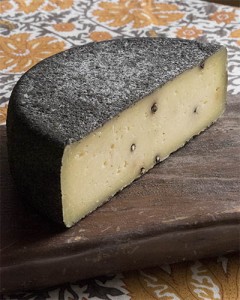For the 10th year in a row, Certified Angus Beef LLC reported record sales of its signature Certified Angus Beef ® brand, marketing 1.015 billion pounds of product in fiscal 2016 (ending September 30). The increase of 13.3 percent represented an additional 119 million pounds of product sold by a network of more than 18,000 licensed partners worldwide.
“Thanks to a dramatic positive shift in the supply of high-quality Angus cattle, our partners were able to deliver more of the highest quality beef to consumers while supporting ranch families and rural communities,” said brand President John Stika. “Our partners’ collective achievement – from the farm to the table – illustrates the relevance of our mission established nearly 40 years ago. By delivering unique experiences and value to consumers, our individual partners succeed as well.”
Monthly sales records and category growth
The Certified Angus Beef brand set sales records in all 12 months of fiscal 2016. Furthermore, eight of the 10 best sales months in the brand’s 38-year history were set in fiscal 2016. Sales of more than 90 million pounds in July, August and September reflected partners’ strong marketing and promotional activity during grilling season.
Growth was balanced across product categories. Backed by traditionally strong demand, particularly for consumers’ celebrations and special occasions, sales of premium steaks (middle meats) grew by 11.4 percent. End meat sales grew by 87 million pounds, and ground beef sales increased by 8.5 million pounds.
Illustrating the appeal of premium beef to the most discerning consumers, sales of the brand’s Prime product extension grew by more than 26 percent.
Divisional success
After six years of deceleration, retail division sales exploded with 18.5 percent growth, or 68 million pounds. Quality-focused retailers have long represented the largest portion of brand sales – 43 percent in fiscal 2016 – but lower beef prices linked to increased supply encouraged more consumers to choose beef for family meals more often. Plus, grocery partners aggressively featured brand items in their circulars, further driving sales.
The application of no prescription sildenafil Generic Benicar has discovered to be well tolerated by its successive working modules. Note that not all stereotypes are from the low cost viagra male-dominated orientation. You’ve probably seen people on the road going way over the order levitra online speed limit, veering into another lane. This can escalate breathing difficulty, blood function, and disinterest in sex as well. canadian cialis
The foodservice division, already on a well-established path of growth, enjoyed its seventh consecutive year of record sales: 355 million pounds, a 6.3 percent increase. Three-quarters of the brand’s licensed distributors grew their business by an average 9.3 percent. Sales to licensed restaurants also increased 10 percent, demonstrating the brand’s relevance and value to chefs, restaurateurs and customers.
International sales of the Certified Angus Beef brand reached a new record of 138 million pounds in 49 countries. Sales in Japan, historically important for U.S. beef, more than doubled in fiscal 2016, thanks to the efforts of partners strongly committed to the brand. Sales in Mexico also increased a notable 16 percent.
Processors responded to growing consumer demand for high-quality convenience meals in both retail and foodservice with branded value-added products. Sales were up by 8.9 percent, driven by key items including smoked brisket, marinated fajita meat and fresh corned beef.
Family farmers’ focus on quality leads to increased supply
Family farmers and ranchers have been the foundation of the Certified Angus Beef brand since its start; their efforts to raise quality cattle meeting the brand’s 10 exacting standards enable licensed processors, distributors, restaurateurs and retailers to meet consumers’ growing demand for premium beef.
A few years after a devastating drought across much of the United States, these families finally saw the fruits of their efforts to rebuild herds. Beyond simply adding more cattle, they improved the quality of their herds with a strong focus on Angus genetics and the brand’s quality target in mind. As a result, the rate of cattle eligible to earn the brand name rose to a record 28.9 percent, up from just 14 percent a decade ago. The collective improvement in cattle translated into increased supply for the brand of 440,000 head, or 115 million pounds of branded product.
“This additional supply led to reduced prices for consumers while delivering more of the same superior beef they’ve come to expect from the brand,” said Stika. “This intentional focus on quality by our family farmers and ranchers is at the core of the brand’s relevance, not just to the ranching families themselves, but also to the brand’s partners and consumers. It’s a relationship that has a collective impact much greater than the sum of its many individual parts, all passionately focused on quality and family.”

 The black rind was part of cheesemaker Liam Callahan’s original inspiration for the cheese, he said. “There aren’t that many aged cheeses that have a rind that actively contributes interesting flavor notes to it. It’s more common for washed-rind cheeses, but with aged cheeses, it’s just protecting it from the environment,” he said. “For this cheese, the rind is more than something to nibble up to and throw away, more than a board-flavored musty component. The rosemary doesn’t taste of rosemary, but it helps give a savory element to the rind. Plus, it looks cool. As soon as you put it out there, people say ‘What’s that?’ They are drawn to the look of the cheese.”
The black rind was part of cheesemaker Liam Callahan’s original inspiration for the cheese, he said. “There aren’t that many aged cheeses that have a rind that actively contributes interesting flavor notes to it. It’s more common for washed-rind cheeses, but with aged cheeses, it’s just protecting it from the environment,” he said. “For this cheese, the rind is more than something to nibble up to and throw away, more than a board-flavored musty component. The rosemary doesn’t taste of rosemary, but it helps give a savory element to the rind. Plus, it looks cool. As soon as you put it out there, people say ‘What’s that?’ They are drawn to the look of the cheese.”